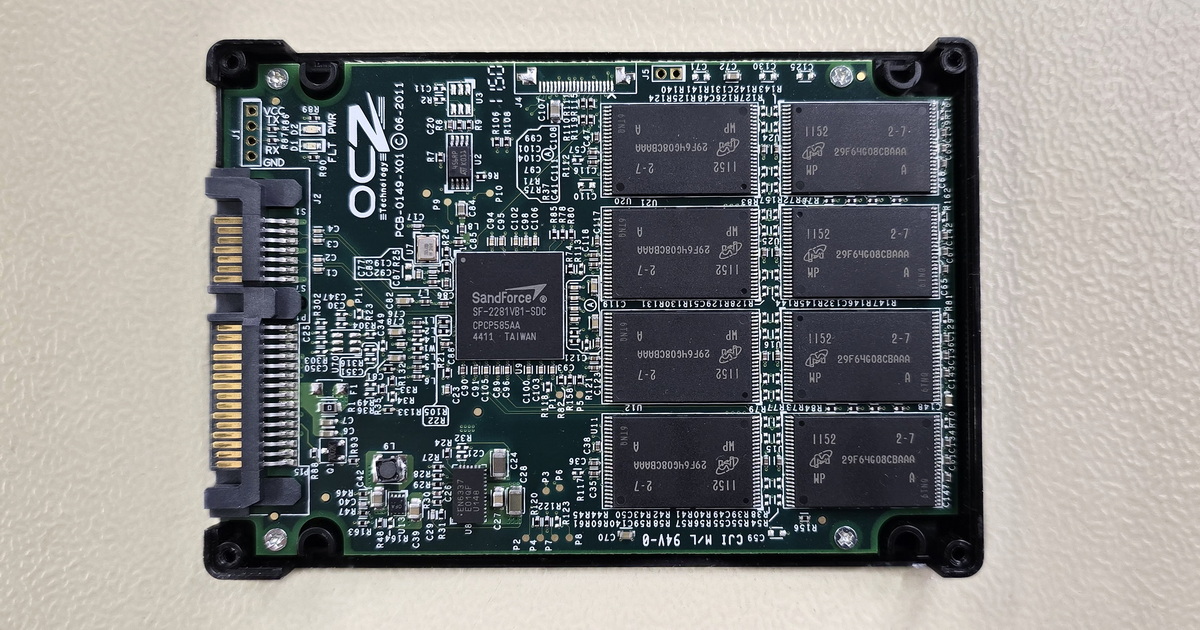This is a type of failure that users typically can't resolve on their own. The drive appears fine: it connects to the computer, spins up, and makes no unusual noises, but the data remains inaccessible. The user might try a different cable or another computer, but to no avail. At this point, user attempts should stop, and the drive should be handed over to a data recovery specialist.

+420 608 177 773
Modern drives often include technologies such as SMR (Shingled Magnetic Recording), SED (Self-Encrypted Drive), locked firmware modes, etc. Depending on the brand and model, bypassing these technologies can range from complicated to nearly impossible without in-depth expertise and the right tools.
In this case, the PCB needed to be modified for communication via a different interface and its service area had to be altered. Once this was done, access to both the drive’s service data and the user data became possible. From a technical perspective, this job was on the simpler side, and after the PCB intervention, a full binary copy of the drive could be created, allowing for successful data recovery.
External USB Drive: Western Digital My Passport
Internal Drive: WD20SDRW
Capacity: 2TB
Issue: The drive is recognized by the OS, but data is inaccessible
Solution: PCB modification, service data alteration
Result: 100% success
The recovery was successful, and the client received all restored data on a new drive, exactly as it had been stored before the failure. However, recovery isn’t always this straightforward or fully successful. That’s why regular backups are essential, and in case of failure, it's always best to consult an expert first. Don’t hesitate to use our free diagnostics service, where you can discuss the issue with an experienced technician in advance.
Explanation of Terms Used in the Article
PCB (Printed Circuit Board) – Disk Electronics:
The disk's electronics is a circuit board ensuring all communication between the internal disk and the computer. In standard models, it contains basic control elements and power supply circuits. However, in modern drives, especially from brands like WD or Seagate, it is equipped with an advanced microcontroller (MCU), which often combines the functions of a processor, memory, and encryption module. This chip also contains unique service data (firmware, adaptive parameters), without which the disk cannot be properly initialized. Therefore, replacing the PCB without transferring this data is practically non-functional in newer models.
SED (Self-Encrypting Drive):
SED is a technology that ensures automatic data encryption directly on the hard drive. This means that data is encrypted in real-time without the need for additional software or user intervention. Although accessing data often requires entering correct authentication credentials, thereby increasing the security of stored information, with modern drives, data encryption can be active even without a user-set password, using internal disk keys controlled by the microcontroller (MCU) and sometimes ROM. In such cases, damage to the MCU or the electronics as a whole can prevent data access, even if the user did not use a password, which complicates potential data recovery.
SMR (Shingled Magnetic Recording):
SMR is a data writing technology for hard drives that allows for a higher data storage density. Instead of traditional side-by-side track writing, tracks partially overlap like roof shingles (hence "shingled recording"). While this increases disk capacity, it can affect writing speed, especially during repeated data overwriting, as overlapping tracks also need to be rewritten. For typical data storage and reading, this usually doesn't pose a problem, but with intensive writing (e.g., in a server environment), potential slowdown must be considered.










